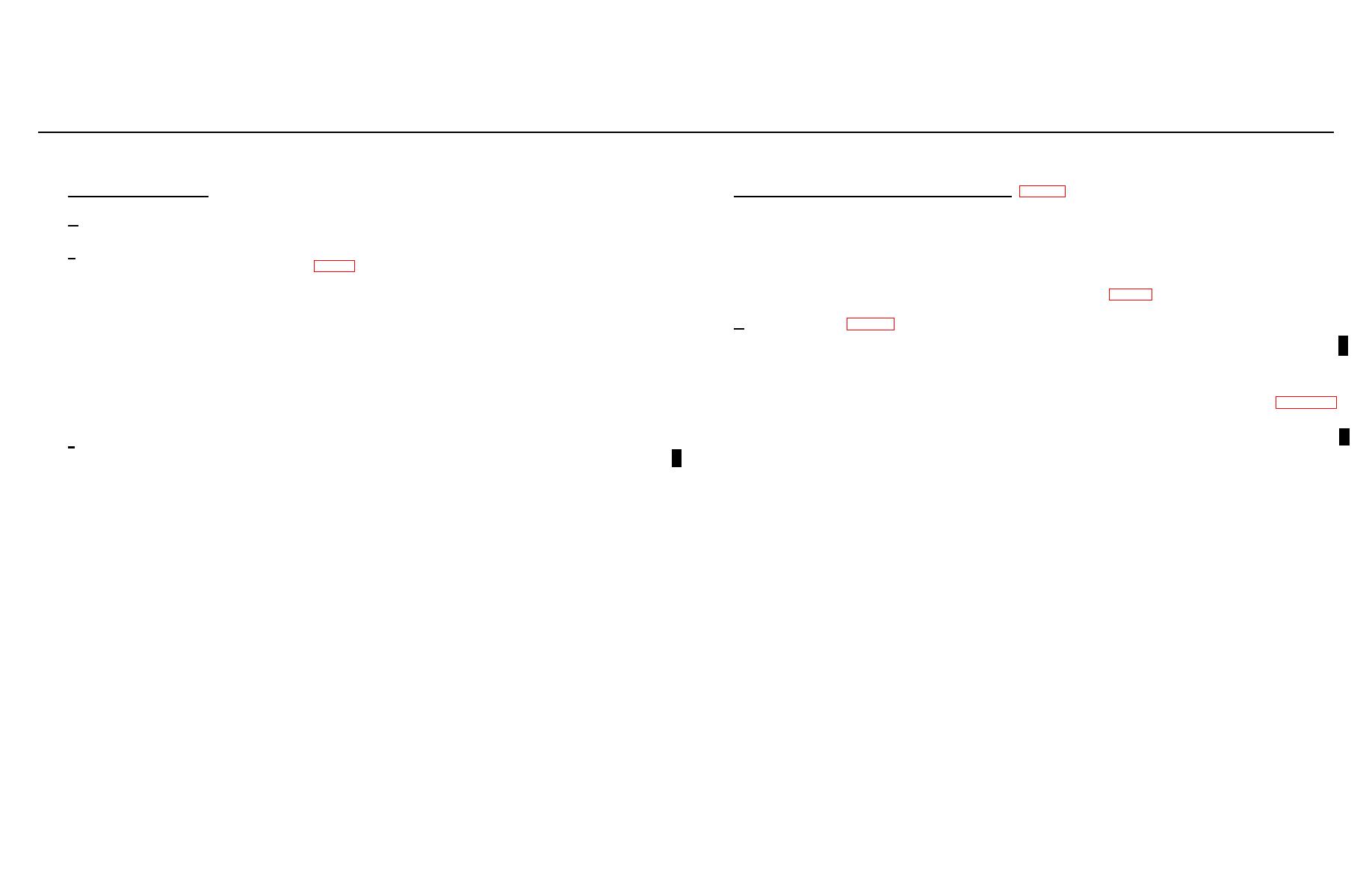
C4
TM 9-4935-481-14-1
CHAPTER 3
OPERATING INSTRUCTIONS
Section I. THEORY OF OPERATION
3-1. General Overall Operation.
3-2. DMS-D Electrical and Electronic Modes of Operation (fig. 3-2).
The DMS-D has the capability of performance testing and fault isolating the tracker, TTS, MTS, and LET to a
a.
The Dragon Maintenance Set (DMS) provides the field support for all items of the Dragon Weapon Syst m. The
e
subassembly or card level. To accomplish this task, the DMS-D is subdivided into three major sections: the tracker, tracker
DMS-D and DMS-G each have provisions for interfacing with the Unit Under Test (UUT) and with each other, when required.
test set, and trainer. Each of these sections contain the controls necessary to properly stimulate the corresponding UUT, or,
b.
The DMS-D may be subdivided into two basic functional sections; a stimuli section and a monitor section. An
as is the case with the trainer, evaluate various signals generated within the UUT. The remainder of the DMS-D is allocated
imaginary vertical line dividing the DMS-D front panel (fig. 3-1) in half would basically split these two sections.
for support and measurement functions, and consists of the following sections: monitor/control, power control and battery
charging, counter inhibit, peak detector and internal test. The DMS-D theory of operation will be concerned with the above
mentioned sections, and can best be followed by referring to the block diagrams (fig. 3-2, 3-3, 3-4, 3-5, and 3-8).
(1) The stimuli section (left half) provides the inputs which would normally be encountered during UUT
operation. The DMS-D provides a means of varying the stimuli to the UUT when parameter or limit testing is essential to
a.
Monitor/Control. (fig. 3-3)
determining whether or not a UUT is operating properly. The stimuli section is subdivided for ready identification of the
controls required to operationally check the trainer monitoring set (MTS), tracker, and tracker test set (TTS). The auxiliary
(1) DMM FUNCTION. The DMM measurement mode is controlled by DMM function switch S5. Th e vdc, vac,
controls provide the operator with a means of stopping automated test sequences and for conditioning certain UUT outputs
and kohms positions are self evident; the check position results in a meter display of 1.000 0.002, . 2 digits/ if the DMM
C
for monitoring.
is operating correctly.
(2) The monitor section (right half) allows the operator to select either the stimuli being generated by the DMS
(2) DMM LO. DMM LO switch S4 permits programming the input low side of the DMM to various returns on S4,
or the response to stimuli by the UUT and display it on either the counter-timer (CT), the digital multimeter (DMM) or an
as well as any signal available on selector B. The switch positions and corresponding functions are shown in table 3-1.4.
external oscilloscope. The monitor section has a signal conditioner which is used primarily with the CT.
The return selected by the DMM LO switch becomes available on the low (male) side of selector A output J12.
(3) DMM INPUT. In the sel A position of this switch (S8), the DMM high input m is connected to selector A
c.
The DMS-G is dependent on the DMS-D for operation. The DMS-D furnishes the power and certain stimuli for
output, while the DMM input position allows an external signal to be applied to the DMM through DMM input jack J17.
the UUT's being tested by the DMS-G. There are 16 adapters which provide the interface between the DMS-G and the UUT.
(4)
Selector switches.
Each printed circuit card (UUT) receives power and stimuli selected by the operator as he positions the test controls to
predetermined positions. The DMS-G has a special adapter for the tracker's CSCB because of the special environmental
(a) Selector switches A, B, and C (S1, S2, and S3 respectively) allow monitoring of the many signals
seal on the electrical connector. The DMS-G, in conjunction with the DMS-D, provides an operator with a multitude of
generated within the DMS-D or the UUT Since A through E decks of the switches are wired in parallel, any signal selected by
options so that he may effectively troubleshoot and fault isolate the faulty components of the Dragon system hardware.
an A through E setting of the inner dial is available at selector A, B, and C outputs. F through H decks are paralleled only for
selectors B and C, making selector A unique for those settings, while the I decks are separate and unique for all three
switches.
(b)
I-22, I-23, and I-24 of selectors A, B, and C are reserved for special use, as described below:
3-1

